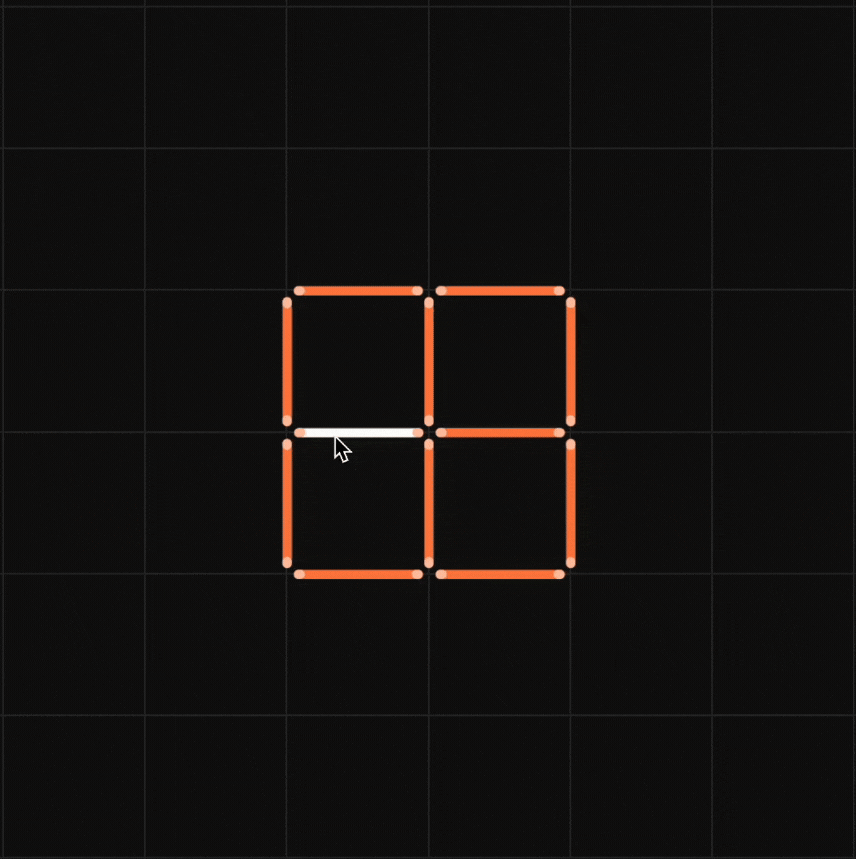

Vertical Angles
Vertical angles are formed when two lines meet each other at a point. They are always equal to each other. In other words, whenever two lines cross or intersect each other, 4 angles are formed. We can observe that two angles that are opposite to each other are equal and they are called vertical angles. They are also referred to as 'Vertically opposite angles' as they lie opposite to each other.
| 1. | What are Vertical Angles? |
| 2. | Vertical Angles Theorem |
| 3. | Vertically Opposite Angles Worksheet |
| 4. | FAQs on Vertical Angles |
What are Vertical Angles?
When two lines intersect, four angles are formed. There are two pairs of nonadjacent angles. These pairs are called vertical angles. In the image given below, (∠1, ∠3) and (∠2, ∠4) are two vertical angle pairs.
Vertical Angles Definition
Vertical angles are a pair of non-adjacent angles formed by the intersection of two straight lines. In simple words, vertical angles are located across from one another in the corners of the "X" formed by two straight lines. They are also called vertically opposite angles as they are situated opposite to each other.

Vertical Angles Theorem
Vertical angles theorem or vertically opposite angles theorem states that two opposite vertical angles formed when two lines intersect each other are always equal (congruent) to each other. Let's learn about the vertical angles theorem and its proof in detail.
Statement: Vertical angles (the opposite angles that are formed when two lines intersect each other) are congruent.
Vertical Angles Proof
The proof is simple and is based on straight angles. We already know that angles on a straight line add up to 180°.

So in the above figure,
∠1 + ∠2 = 180° (Since they are a linear pair of angles) --------- (1)
∠1 +∠4 = 180° (Since they are a linear pair of angles) --------- (2)
From equations (1) and (2), ∠1 + ∠2 = 180° = ∠1 +∠4.
According to transitive property, if a = b and b = c then a = c.
Therefore, we can rewrite the statement as ∠1 + ∠2 = ∠1 +∠4. --------(3)
By eliminating ∠1 on both sides of the equation (3), we get ∠2 = ∠4.
Similarly. we can use the same set of statements to prove that ∠1 = ∠3. Therefore, we conclude that vertically opposite angles are always equal.
To find the measure of angles in the figure, we use the straight angle property and vertical angle theorem simultaneously. Let us look at some solved examples to understand this.
Vertically Opposite Angles Worksheet
The following table is consists of creative vertical angles worksheets. These worksheets are easy and free to download. Try and practice few questions based on vertically opposite angles and enhance the knowledge about the topic.
|
Vertical Angles Worksheet - 1 |
|
|
Vertical Angles Worksheet - 2 |
|
|
Vertical Angles Worksheet - 3 |
|
|
Vertical Angles Worksheet - 4 |
Important Notes
- Vertical angles are always equal.
- Vertical angles can be supplementary as well as complimentary.
- Vertical angles are always nonadjacent.
Topics Related to Vertical Angles
Check out some interesting articles related to vertical angles.
- Angles
- Alternate Angles
- Alternate Interior Angles Theorem
- Complementary Angles
- Complementary Angle Calculator
- Supplementary Angles
- Geometry
Vertical Angles Examples
-
Example 1: Find the measure of ∠f from the figure using the vertical angles theorem.

Solution:
In the image given below, we can observe that AE and DC are two straight lines. Here, ∠DOE and ∠AOC are vertical angles.
∠DOE = ∠AOC
118° = 90° + ∠f
∠f = 118° - 90°
∠f = 28°
Therefore, ∠f = 28°
-
Example 2: In the figure shown below ∠f is equal to 79° because vertically opposite angles are equal. Is the statement right? Justify your answer.

Solution:
Here, 79° and f are located opposite, but they are not vertical angles as the angles are not formed by the intersection of two straight lines. Here, BD is not a straight line. Therefore, ∠f is not equal to 79°. The given statement is false.
-
Example 3: If angle b is three times the size of angle a, find out the values of angles a and b by using the vertical angles theorem.

Solution:
From the figure, we can observe that 80° and the sum of the angles a and b are vertically opposite. Which means ∠a + ∠b = 80°. It is given that ∠b = 3∠a. Substituting the values in the equation of ∠a + ∠b = 80°, we get, ∠a + 3∠a = 80°
4∠a = 80°
∠a= 80°/4
∠a= 20°
Since ∠b = 3∠a, ∠b = 3 × 20°
∠b = 60°
Therefore, ∠a= 20° and ∠b= 60°

Practice Questions on Vertical Angles
-
Q.1
Find the value of 'a' from the figure.
 Responses
Responses -
Q.2. Vertical angles must measure less than 90°.Responses
FAQs on Vertical Angles
What are Vertical Angles in Geometry?
Vertical angles are formed when two lines intersect each other. Out of the 4 angles that are formed, the angles that are opposite to each other are vertical angles. They are also referred to as 'vertically opposite angles. These angles are always equal.
☛Also Read
Are Vertical Angles Congruent?
When two straight lines intersect each other vertical angles are formed. Vertical angles are always congruent and equal. Vertical angles are congruent as the two pairs of non-adjacent angles formed by intersecting two lines superimpose on each other.
☛Check out and read
Are Vertical Angles Supplementary?
When any two angles sum up to 180°, we call them supplementary angles. If there is a case wherein, the vertical angles are right angles or equal to 90°, then the vertical angles are 90° each. Therefore, the sum of these two angles will be equal to 180°. So in such cases, we can say that vertical angles are supplementary. It is to be noted that this is a special case, wherein the vertical angles are supplementary. Otherwise, in all the other cases where the value of each of the vertical angles is less than or more than 90 degrees, they are not supplementary.
☛Check out the difference between the following:
What is the Vertical Angle Theorem?
The vertical angle theorem states that the angles formed by two intersecting lines which are called vertical angles are congruent. The vertical angles are of equal measurements. For example, If ∠a, ∠b, ∠c, ∠d are the 4 angles formed by two intersecting lines and ∠a is vertically opposite to ∠b and ∠c is vertically opposite to ∠d, then ∠a is congruent to ∠b and ∠c is congruent to ∠d.
Can Vertical Angles Be Right Angles?
Yes, vertical angles can be right angles. When the two opposite vertical angles measure 90° each, then the vertical angles are said to be right angles. This can be observed from the x-axis and y-axis lines of a cartesian graph.
☛Check out
How to Measure the Value of Vertical Angle?
While solving such cases, first we need to observe the given parameters carefully. If the angle next to the vertical angle is given then it is easy to determine the value of vertical angles by subtracting the given value from 180 degrees to As it is proved in geometry that the vertical angle and its adjacent angle are supplementary (180°) to each other.
How do you tell if an Angle is an Adjacent or Vertical Angle?
Vertical angles are the angles formed when two lines intersect each other. The opposite angles formed by these lines are called vertically opposite angles. Whereas, adjacent angles are two angles that have one common arm and a vertex.
Can Vertical Angles Be Adjacent?
Vertical angles are opposite from each other whereas, adjacent angles are the ones next to each other. Thus, vertical angles can never be adjacent to each other.
Are Vertical Angles Always Congruent?
Yes, vertical angles are always congruent. The intersection of two lines makes 4 angles. In this, two pairs of vertical angles are formed. They are equal in measure and are congruent.
visual curriculum